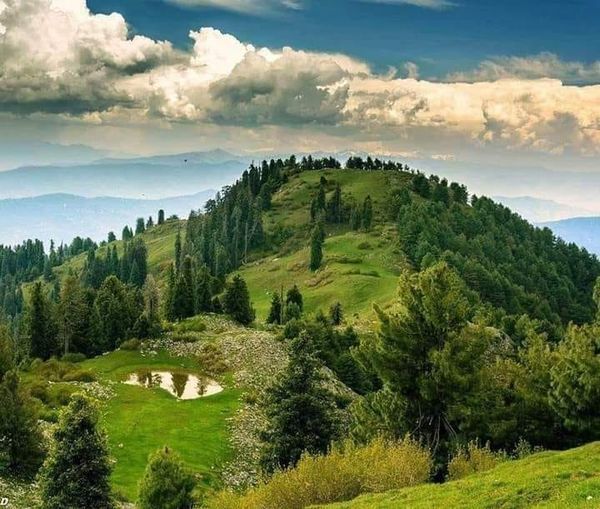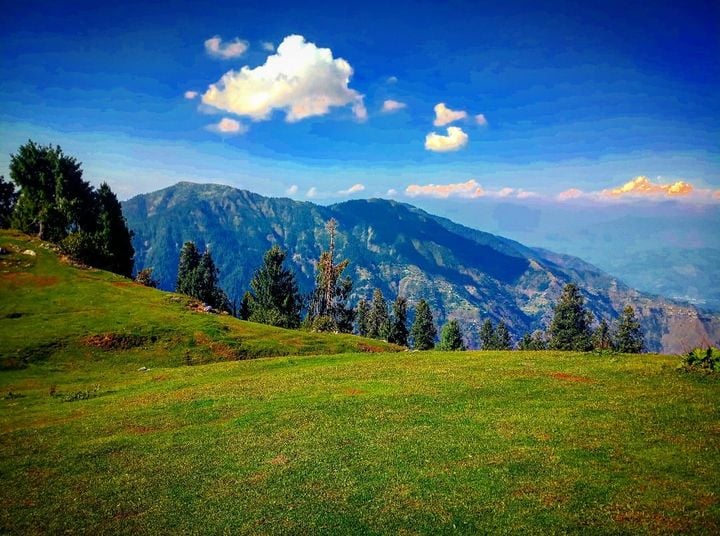Welcome to PakNorth.com
Miranjani vs. Mushkpuri: The Ultimate Hiking Guide to Galyat's Top Peaks
11/2/20245 min read
Miranjani vs. Mushkpuri: The Ultimate Hiking Guide to Galyat's Top Peaks
For adventure seekers exploring Pakistan's Galyat region, Miranjani and Mushkpuri peaks are two must-visit hiking destinations. Both peaks offer unique views, thrilling trails, and a chance to experience the lush natural beauty of the Himalayan range. Whether you’re a beginner or a seasoned hiker, this guide will help you understand the differences between the two peaks, so you can decide which one to conquer on your next outdoor adventure.
---
Overview: Mushkpuri vs. Miranjani
Mushkpuri Peak
Height: 9,300 feet
Location: Galyat region, near Nathiagali
Mushkpuri Track Length: Approximately 3.5 km from Nathiagali
Mushkpuri Top Hiking Time: Around 2-2.5 hours in summer; 3-3.5 hours in winter due to snow
Accessibility: Starts from Nathiagali or Dungagali
Special Features: Clear views of nearby cities and the Himalayas, meadows filled with wildflowers, and sightings of local wildlife
Miranjani Peak
Height: 9,816 feet, making it the highest peak in Galyat
Location: Abbottabad district, northeast of Nathiagali
Miranjani Track Length: Approximately 5 km
Miranjani Top Hiking Time: Around 3-4 hours, depending on conditions
Accessibility: Starts near the Governor House in Nathiagali
Special Features: Offers breathtaking views of Nanga Parbat, panoramic views of surrounding cities, and a more challenging trail
---
Mushkpuri Hiking Track vs. Miranjani Hiking Track
Mushkpuri Hiking Track
The Mushkpuri hiking track can be accessed via two main routes, one from Nathiagali and the other from Dungagali. The Nathiagali track is longer, with a gentler slope, making it easier for families or beginner hikers. Meanwhile, the Dungagali track is shorter but steeper. The trail winds through a dense forest filled with cedar, oak, and blue pine trees and is vibrant with wild daisy flowers in spring and summer. The abundance of flora and fauna, including birds, monkeys, and occasionally green parrots, adds to the charm. Horse rides are available at the start, and the track is suitable for a quick, refreshing hike.
Miranjani Hiking Track
The Miranjani hiking track is known for being more challenging, especially in the initial and final segments, which are steep. The middle part of the track has a more gentle slope, making it manageable even for those new to hiking but looking for an adventurous trek. The trail begins near the Governor House in Nathiagali, weaving through cedar forests and offering an immersive experience of the Himalayan wilderness. Near the top, the trail splits, with the left path leading to Miranjani and the other to Dagri Bangla. Unlike Mushkpuri, there’s no water source along the way, so be sure to carry enough water.
---
Scenic Views and Summit Experience
Mushkpuri Summit
At 9,300 feet, Mushkpuri's summit offers stunning views of several cities, including Abbottabad, Mansehra, and Havelian, as well as a glimpse of the snow-capped Himalayan peaks in clear weather. Mushkpuri's summit is a vast, open meadow, making it ideal for a family picnic, playing sports, or just enjoying the panoramic vistas. In summer, the plateau is lush and filled with wildflowers, creating a beautiful contrast against the surrounding forest. The cold, breezy conditions often require a light jacket, even in summer, and the wind tends to calm down after sunset.
Miranjani Summit
Reaching a height of 9,816 feet, Miranjani rewards hikers with one of the most magnificent views in Galyat. On clear days, you can spot Nanga Parbat in the distance, along with the Jehlum River and cities like Islamabad, Abbottabad, and Rawalpindi. While the summit area is open and offers space for camping, it’s not as expansive as Mushkpuri’s. Stargazers will appreciate the clear night skies here, with the Milky Way often visible. The dramatic mountain scenery and the challenging hike make Miranjani a favorite for those seeking a more rugged, immersive experience.
---
Camping and Weather Conditions
Mushkpuri Weather and Camping
Mushkpuri offers mild weather in summer, though temperatures drop in the evening, so it’s wise to bring warm clothing. Winter hikes can be tougher due to snow, but the snow-covered forest and summit provide a magical, serene experience. The vast summit is great for camping, but families should consider avoiding nighttime camping due to its isolated location.
Miranjani Weather and Camping
Miranjani experiences cooler temperatures year-round, and the weather can change suddenly, with chances of rain even in summer. For campers, it’s essential to bring waterproof tents and cold-weather gear. The higher elevation and more exposed location mean that temperatures can drop sharply at night. Despite its relative isolation, the summit is ideal for experienced campers looking to escape the crowds and enjoy a peaceful night under the stars.
---
Wildlife and Flora on Both Trails
Both trails are rich in flora and fauna, with unique biodiversity that makes each hike special.
Mushkpuri: This trail is known for its colorful wildflowers, including fields of daisies, especially during spring and summer. You’ll encounter monkeys along the way and may even see cows and bulls grazing in the open during summer, as local farmers leave their livestock here to roam freely. The trail is full of birdlife, including green parrots, and offers plenty of photo opportunities.
Miranjani: The Miranjani trail is lined with tall cedar, oak, and blue pine trees. Monkeys are frequently seen here, and occasionally groups of hikers will stop to feed them. Wild cattle can also be spotted in summer, making for an interesting contrast with the forested landscape. The more remote and less-frequented trail also offers opportunities to spot other bird species unique to the Himalayan region.
---
Access and Practical Tips
Parking: Both trails offer parking areas at their respective starting points.
Trail Facilities: Neither trail has shops or water sources, so plan to bring all essentials, including water, snacks, and hiking gear.
Distance from Major Cities:
From Islamabad: Mushkpuri is about 86 km via Murree, while Miranjani is about the same distance.
From Abbottabad: Both Mushkpuri and Miranjani are accessible within 34 km, with Mushkpuri being a slightly shorter drive.
Horse Rides: Available at the start of both trails, ideal for families or those looking to skip the initial steep segments.
---
Mushkpuri vs. Miranjani: Which Should You Choose?
For a Leisurely Hike: If you’re new to hiking or want a more relaxed trek with family, Mushkpuri is the better choice. The gentler incline, beautiful meadow at the top, and shorter trail make it accessible for most fitness levels.
For a Challenging Adventure: For those looking for a rewarding, challenging hike with fewer people, Miranjani offers a rugged experience. The steeper sections and longer distance make it ideal for seasoned hikers. Plus, the summit views and the feeling of accomplishment make it well worth the effort.
For Scenic Views: Both summits offer stunning views, but Miranjani has the advantage of a higher elevation, offering views of Nanga Parbat and more distant cities. Mushkpuri, however, provides a picturesque scene filled with wildflowers and is easier to reach.
For Stargazing and Camping: Both peaks are excellent for stargazing, though Miranjani offers a quieter, more remote setting. For family-friendly camping with less challenging conditions, Mushkpuri’s summit is ideal.
---
Final Thoughts
Both Miranjani and Mushkpuri showcase the natural beauty of Pakistan’s Galyat region in unique ways. Whether you choose the serene, flower-filled trails of Mushkpuri or the rugged, challenging ascent of Miranjani, both peaks promise an unforgettable adventure. Remember to leave no trace, respect the wildlife, and pack out all garbage to preserve these beautiful trails for future generations.




